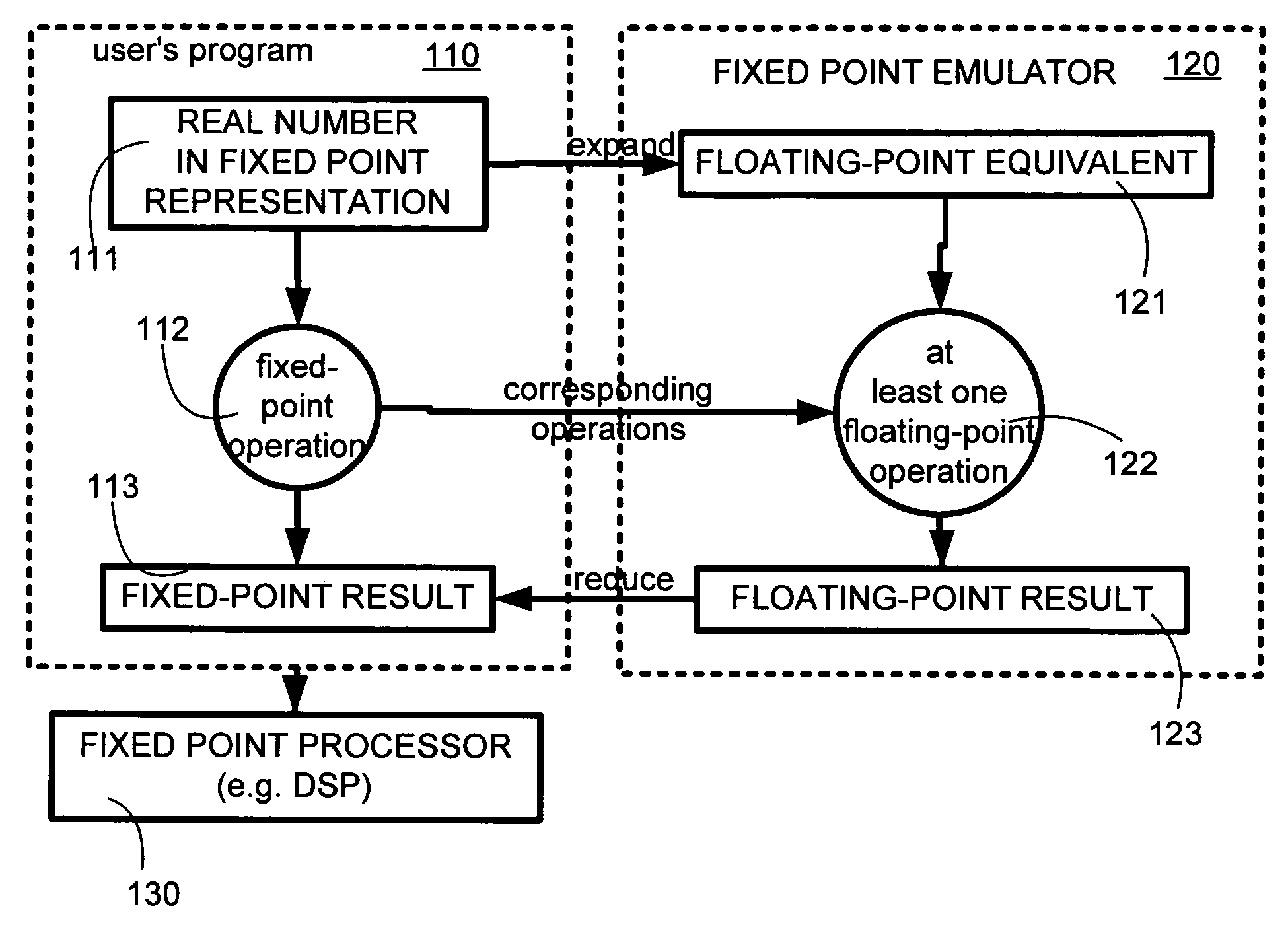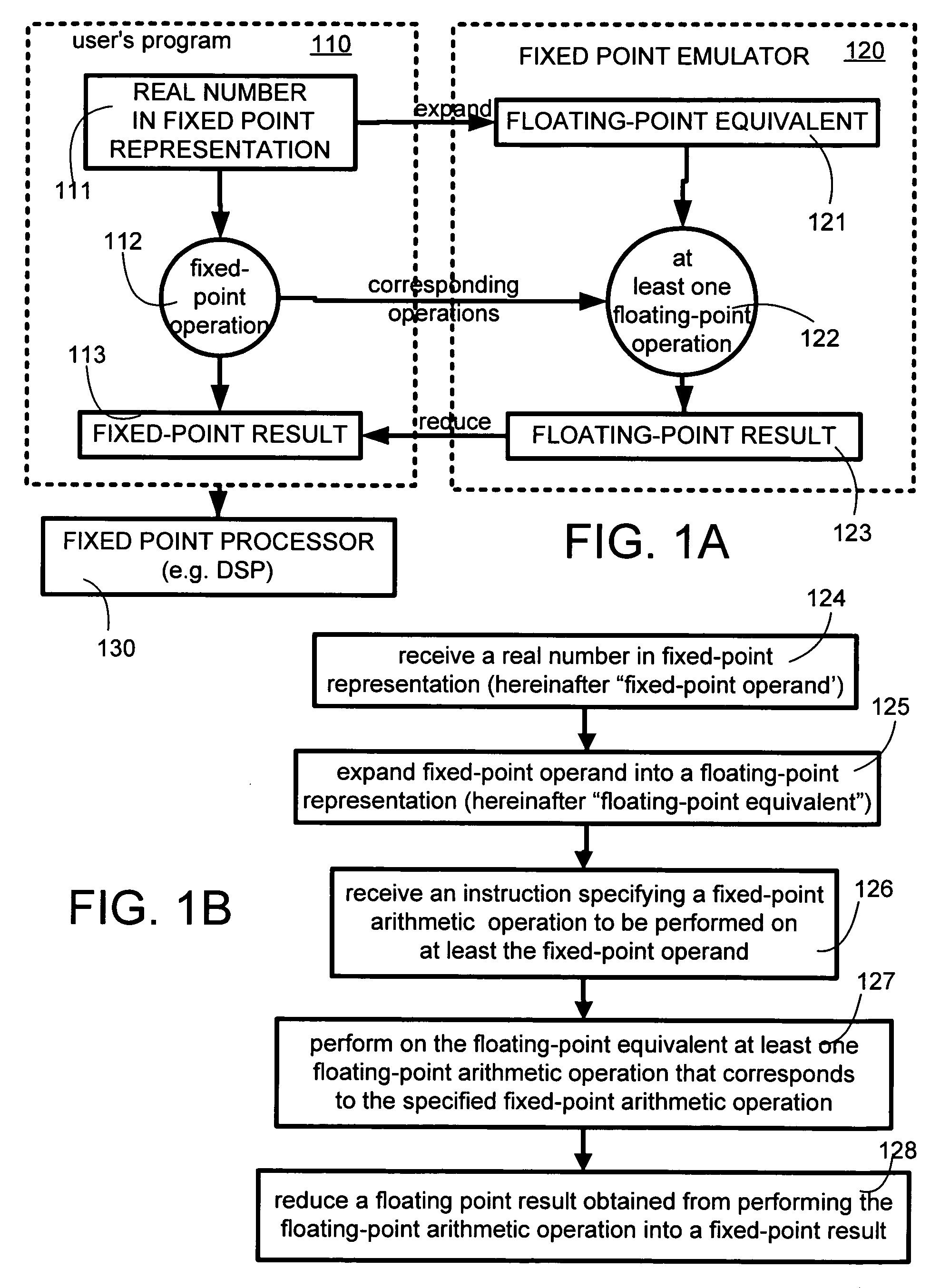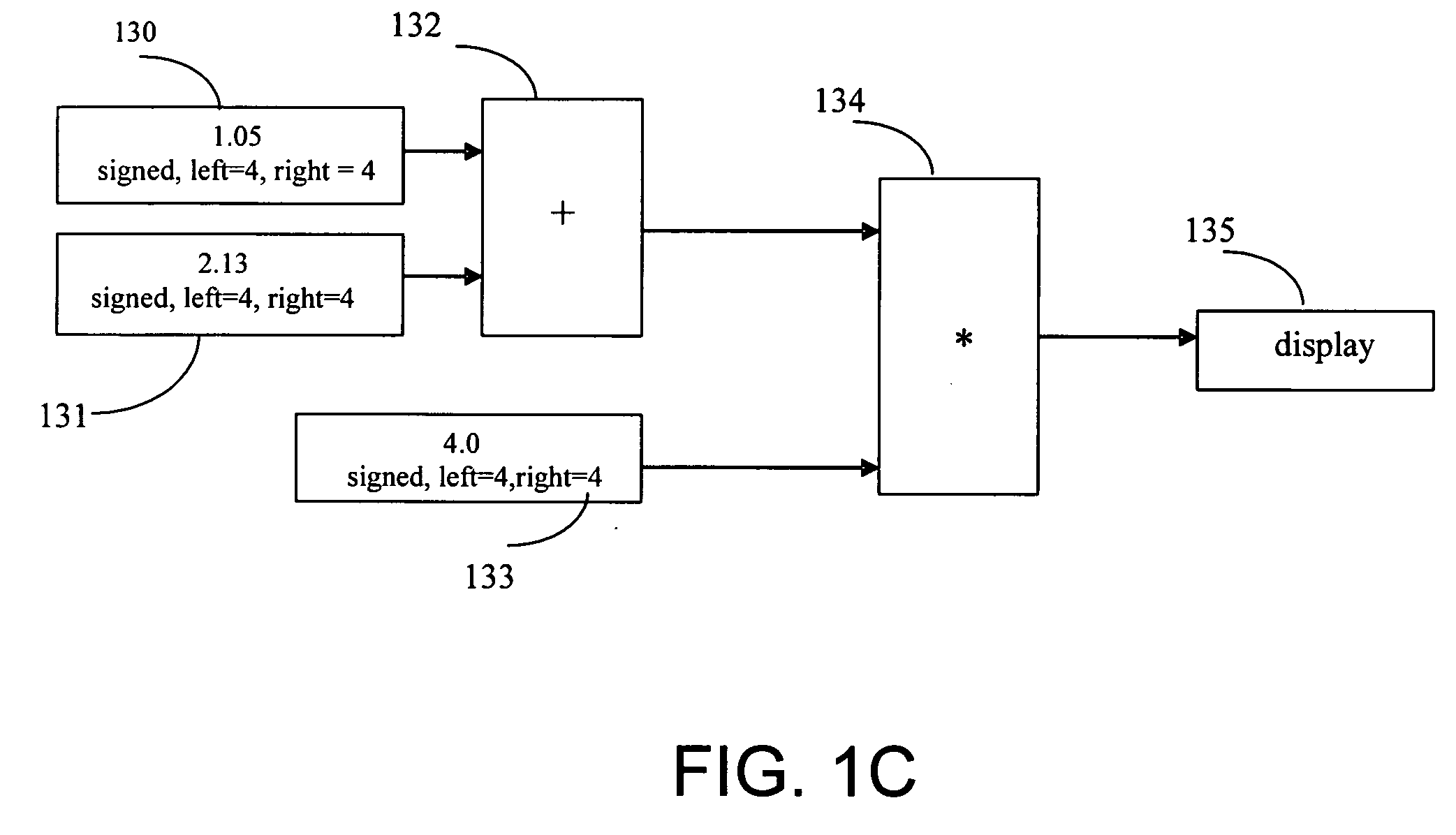Emulation of a fixed point operation using a corresponding floating point operation
a floating point operation and fixed point technology, applied in the field of emulation of fixed point operations using corresponding floating point operations, can solve the problems of manual effort, inefficient software programs, inconvenient operation,
- Summary
- Abstract
- Description
- Claims
- Application Information
AI Technical Summary
Benefits of technology
Problems solved by technology
Method used
Image
Examples
example — fir
Example —FIR Filter
As an example of how simple it is to convert most double precision Matlab programs into fixed-point, consider the following general FIR filter:
function y=fir(c,x) y=dot(c,x) / length(x);
This generic form of the filter accepts both coefficients and data, and returns the filtered result. For instance, a typical call might be:
>> coeffs = [ 0.5 0.25 0.125 0.0625];>> x = [ 0.1 0.1 0.1 0.1]; % Simple set of sampleinput data.>> fir(coeffs, x)
Because the function “fir” is written using generic Matlab operands, it can be invoked directly without change on fixed-point operands. For instance, inserting the conversion:
>> coeffs = [ 0.5 0.25 0.125 0.0625];>> coeffs = fxp(coeffs, 1, 7, ‘s’);>> x = [ 0.1 0.1 0.1 0.1]; % Simple set of sampleinput data.>> fir(coeffs, x)
performs the filter as a fixed point operation, rather than as double precision. Given the choice of input data and coefficients, it's easy to see that the output will be the same, but it's also easily verif...
PUM
 Login to View More
Login to View More Abstract
Description
Claims
Application Information
 Login to View More
Login to View More - R&D
- Intellectual Property
- Life Sciences
- Materials
- Tech Scout
- Unparalleled Data Quality
- Higher Quality Content
- 60% Fewer Hallucinations
Browse by: Latest US Patents, China's latest patents, Technical Efficacy Thesaurus, Application Domain, Technology Topic, Popular Technical Reports.
© 2025 PatSnap. All rights reserved.Legal|Privacy policy|Modern Slavery Act Transparency Statement|Sitemap|About US| Contact US: help@patsnap.com



